#prince ludwig of baden
Text

Portrait of Hereditary Prince Ludwig II of Baden (1824-1858). By Moritz Michael Daffinger.
He succeeded his father on his death on 24 April 1852, although he was never effectively ruler but only nominal grand duke. This was the result of his severe mental illness.
#german aristocracy#house of baden#house of zähringen#zähringen#baden#prince ludwig ii of baden#Erbprinzen Ludwig II. von Baden#moritz michael daffinger#german empire
28 notes
·
View notes
Note
Thanks for answering. Just doing some quick looking into it myself beyond what you mentioned in your answer. In the French Wikipedia article it mentions that Napoleon Bonaparte learned of her existence in 1802 when he overheard a conversion about her and then brought her to Paris and there was some jealously from the Empress and her daughter since the Emperor became very fond of her (although jealousy among the Emperor's relations both blood and in-laws seems pretty par for the course).
Also Eugène de Beauharnais's eldest daughter marries Crown Prince of Sweden (only son of former French Marshal Bernadotte and Napoleon Bonaparte's dejected fiancée Désirée Clary) while her own eldest daughter marries deposed Swedish Crown Prince in exile in Vienna.
Also Queen Sophie of the Netherlands mentioning her death in her correspondence google<dot>com/books/edition/A_Stranger_in_The_Hague/rp29cF15SpAC?hl=en&gbpv=1&dq=Duchess%20Hamilton%20inauthor%3AQueen%20Sophie%20(consort%20of%20William%20III%2C%20King%20of%20the%20Netherlands)&pg=PA206&printsec=frontcover
First of all: thank you so much! I feel like poor Stéphanie really is overlooked, because she did not stay at Napoleon's court for long. Basically, she gets noticed by the First Consul (or possibly rather by Josephine), sent to Madame Campan's bording school (because where else) and only truly shows up at court in 1805/6, in order to be married off to poor Karl von Baden, who had just lost his former fiancée Auguste von Bayern to a certain Eugène de Beauharnais (Stéphanie's cousin).
Which is a story in itself, of course.
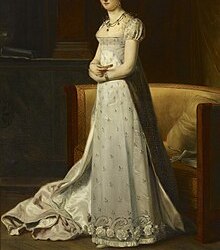
I am not sure the cousins were particularly close. In a letter to Eugène Josephine refers to Stéphanie as "la petite Beauharnais", the little Beauharnais, which seems a bit odd given the close family relations. But it also could just be a nickname and need not mean much.
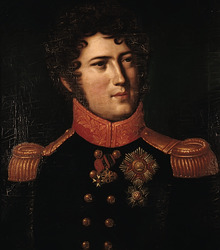
The marriage to Karl von Baden - as the story goes - started out exceptionally bad. By most accounts, Karl was not a friendly character in the first place, and he was still hurt about having been denied a good marriage (to a princess from an old regime princely family) and now being ... strongly invited to conduct a - in his eyes - bad one with some lower nobility girl who had merely been adopted by the French emperor. (According to Bavarian crown prince Ludwig, Karl shortly before his marriage accused Ludwig of not having done enough to strengthen his sister's resolve and to avoid Auguste's marriage to Eugène de Beauharnais.)
Stéphanie, as to her, was not yet 17 years old and obviously not enchanted to get married to this strange German. When Karl showed up in Paris for the wedding, he still wore his hair braided in the Prussian fashion, much to the horror of his Parisian teen bride, who declared this hairstyle, and with it the bridegroom as a whole, inacceptable. When Karl went to see a barber and returned fashionably coiffed à la Titus - Stéphanie started crying and declared he was even uglier now.
As I said, not a good start. And it did not get much better because - as the story goes - during her wedding night Stéphanie locked herself up in the bedroom with some friends from bording school, while Karl was left outside, passing the night on a chair in front of the bedroom door... allegedly.
While much of this may be exaggeration and court gossip, there's little doubt that the marriage was not a happy one. During the Prussian campaign in 1806 Napoleon even felt the need to write to the marshal in whose corps Karl von Baden was to serve, in order to make sure that Karl would not get mocked openly by the soldiers. And I remember one letter to Berthier in which Napoleon wrote something to the effect of "Okay, if he absolutely wants to come, let him join the army. But I really wish he'd go home and make a baby with his wife!"
Poor Stéphanie must have felt quite alone in that rather strange Baden family she had married into. The person actually calling the shots in Karlsruhe was Amalie von Baden, Karl's mother (and also the mother of Queen Friederike of Sweden, Queen Karoline of Bavaria and the Tsarina Elisabeth of Russia). Karl's grandfather, Grand Duke Karl sen., was old and increasingly senile, but he had a young second wife in what was called a "left-hand marriage", and this lady was in a permanent feud with Amalie. Lastly, the old grand duke also had another son, a known intriguer and womanizer.
Happy family times. Especially as all these illustrious personalities immediately united in their dislike of that second class French princess they had been forced to accept into their family.
And it seems Stéphanie, after trying to adapt to her new circumstances, rebelled quite a bit. Enough to earn her some stern rebukes from her imperial adoptive father.
It took until 1809 for the situation to truly change, until Josephine had to leave court and the Beauharnais and their foreign relations thus lost their closest link to the French court. Napoleon's marriage to an Austrian may have been felt as a threat by all of the smaller Rhinebund states, who had received French support mostly in order to serve as a buffer against Austria, and who now suddenly found themselves sandwiched between two - always hungry - super powers. Their princely families immediately closed ranks, and this included Stéphanie.
Or maybe Karl had really started to grow fond of his wife. Their first daughter was born in 1811. And after Napoleon's fall, Karl refused to try and get a divorce. (It did not keep him from heaving wild orgies during his stay at the Vienna Congress though.)
Stéphanie did end her life in Baden, where she was very well-liked by the population.
20 notes
·
View notes
Text
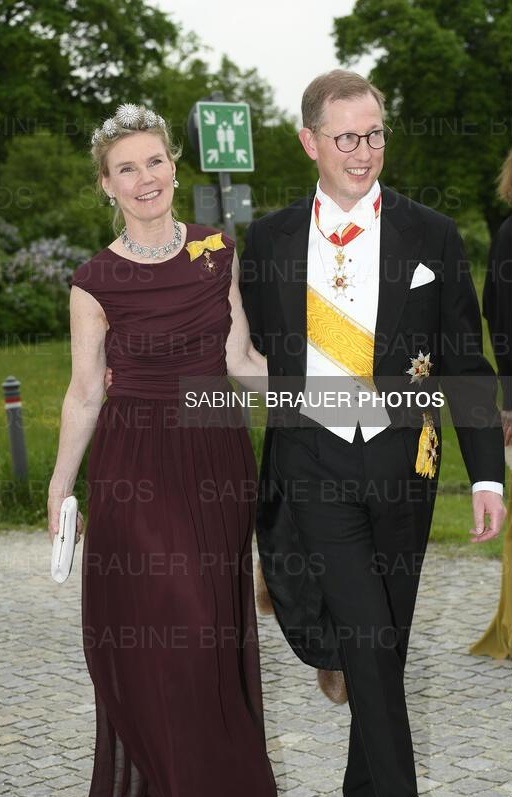
TIARA ALERT: Margravine Stephanie of Baden wore the Baden Sunburst Tiara for the ball following the wedding of Prince Ludwig & Princess Sophie of Bavaria at Schleissheim Palace in Munich, Germany on 20 May 2023.
#Tiara Alert#Margravine Stephanie#Baden#Baden Royal Family#Germany#German Royalty#tiara#sunburst#diamond
36 notes
·
View notes
Text

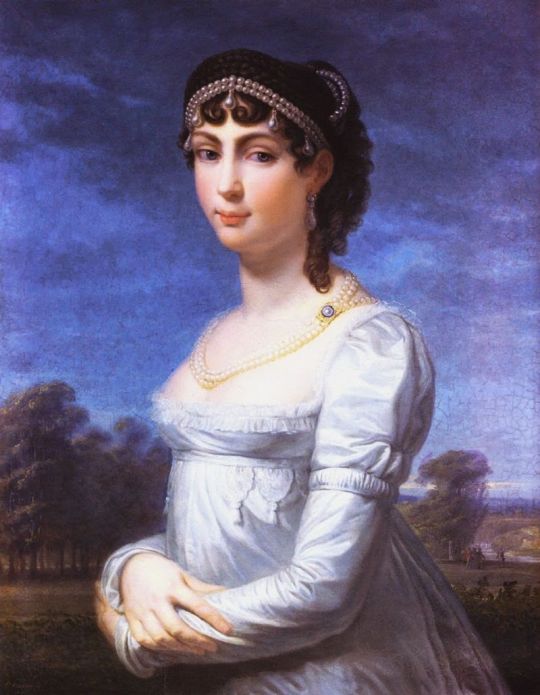
Princess Auguste of Bavaria writing to her brother, the future King Ludwig I of Bavaria, about Eugène de Beauharnais for the first time:
12 April 1805:
I even believe that Herr Otto [the French ambassador in Munich] had the order of asking my hand for Eugen Boharnet (sic); if [the engagement] with the Prince [Karl of Baden] wasn't so certain, a negative answer would had been dangerous; I do not even want to think the shame that it would have meant for our house
Princess Auguste of Bavaria writing to her brother, the future King Ludwig I of Bavaria, about Eugène de Beauharnais thirteen months later:
4 June 1806:
My husband deserves to be your brother-in-law... He has been ten days absent and I have never felt so abandoned; I could not stand a longer separation. And the Emperor [Napoleon] imagines that I'll decide to go to Paris to give birth. He is wrong. Eugène can not abandon Italy for a long time, and I will not separate from my husband
#actually obsessed with this#she went from 'marrying this whatever-his-name-is would have shamed our house thankfully that ain't ever happening'#to 'I love him so much he is the most deserving man ever I literally cannot be apart from him' in just a year. the clownery of our girl#auguste of bavaria duchess of leuchtenberg#eugène de beauharnais duke of leuchtenberg#ludwig i of bavaria#historicwomendaily
129 notes
·
View notes
Text

Baden 1928
Hereditary Grand Duke Georg Donatus of Hesse and his brother Prince Ludwig of Hesse at the two-seater Opel competition in Baden.
#georg donatus of hesse#ludwig of hesse#hesse and by rhine#baden baden#1920s#1928#georg donatus#Louis of Hesse#hesse family#hessen#house of hesse#duke of hesse#Hessian Royal family
12 notes
·
View notes
Text

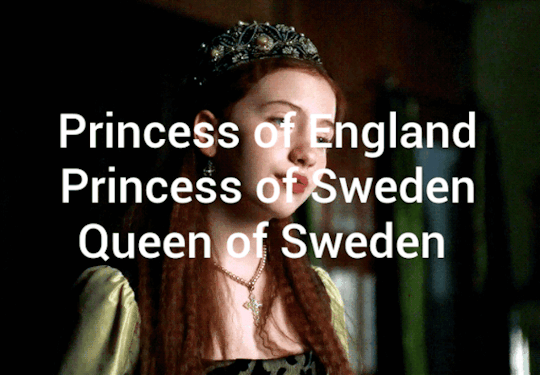

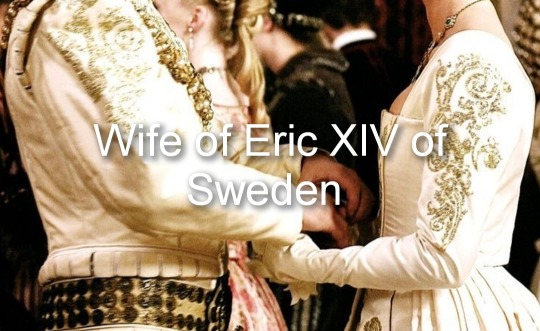

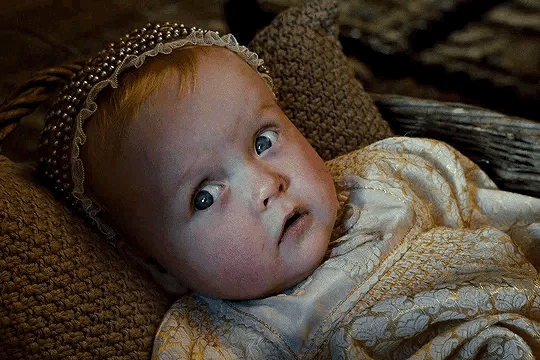
A happier life for Henry VIII's children. Part 2.
Elizabeth was the second daughter of King Henry VIII of England and his second wife Anne Boleyn. When the girl was 3 years old, the king annulled the marriage to her mother. Henry sent Anne to a convent and forbade Anne to communicate with her daughter, and soon afterward married Jane Seymour. She developed a close relationship with her stepmother, brother and sister. In 1547, her father died and Elizabeth was finally able to meet her mother. The meeting between mother and daughter after years of separation was very touching. When Anne saw Elizabeth, she could not believe that this beautiful girl was her daughter. First they cried for a long time in each other's arms, and then they sat up all night talking. They had a lot to say to each other. So their meetings became more and more frequent, and Edward allowed his father's second wife to stay with Elizabeth. In 1557 Edward VI began to look for worthy suitors from Protestant countries, for the hand of his sister, and his choice fell on the eldest son of the King of Sweden, Prince Eric. In the king's opinion, this marriage was to strengthen the sympathy of his subjects for him. In 1558, the princess became the wife of the heir to the Swedish crown, and 2 years later they became King and Queen of Sweden. It is said that at their first meeting the prince was so enchanted by her beauty that he lost the power of speech. Their married life was strong and passionate. For her husband Elizabeth became the most important confidante, with whom he discussed many problems. Six children were born in the marriage:
Gustav II of Sweden (1559 - 1605) Not interested in politics and never wanted to be king. Overthrown and killed by conspirators, including his own son Charles. Husband of Maria of Austria. Father of 4 children: Charles IX, Ludwig, Frederick, Elizabeth.
Anne of Sweden (1560 - 1634) Countess of East Friesland. At the age of 18 she married her cousin Enno III. The marriage was a happy one for both spouses. They became the parents of 9 children: Edzard III, Sabina, Agnes, Johann, Gustav, Rudolf, Christina, Sophia, Christian.
Magnus of Sweden(1561 - 1619) In 1582 he married his cousin Mary of England. They had 4 children: Nils, Katharina, Gunilla, Arnold. Magnus was widowed in 1590. And in 1592 he married his mistress Maria Oberg, but before that he received from his elder brother-king and his mother a permission to remarry. From his second wife he had 6 children: Magdalena, Sven, Hokon, Valdemar, Ingeborga, Svante.
Johan of Sweden(1565 - 1630) From childhood Johan was interested in navigation and discoveries. Therefore, he spent most of his life traveling, exploring lands not previously known. He was never married, however he recognized 3 children: Brita, Lars, Eric. And upon his death, he left each child a generous inheritance.
Cecily of Sweden(1567 - 1634) Macgravine of Baden-Rodemachern. In 1583 became the wife of Edward Fortunatus They became the parents of 5 children: Christoph III, Cecily, Elizabeth, Ottilia, Herman. In 1603, her husband died and Cecily was offered remarriage
Virginia of Sweden(1570 - 1606) Duchess of Holstein-Hottorp, wife of Johann Adolf. Virginia was older than her husband by 5 years, but despite this their marriage was happy. They had 7 children: Frederick III, Elisabeth, Conrad, Dorothea, Gedviga, Albrecht and Augusta. The Duchess died of childbirth fever a week after the birth of the last child. After the death of his wife, Johann lived the remaining 10 years until his death as a widower.
In 1568, the queen returned briefly to England for her mother's funeral. In 1577, King Eric XIV of Sweden died, and Elizabeth mourned her husband's death bitterly. But fortunately for Elizabeth, she had her children and grandchildren by her side, who became the meaning of her life. In addition, the Queen Dowager actively influenced the policies of her eldest son, King Gustav II. Gustav, weak-willed and indecisive, was not interested in ruling the state. In fact, the kingdom was ruled by Elizabeth, which did not please her daughter-in-law. Because of this, the two women often conflicted with each other. In March 1603, the Queen Dowager of Sweden died. She was buried in Uppsala Cathedral next to her husband. And 2 years later Gustav II was overthrown and killed. Her grandson Charles became the next king of Sweden.
Tumblr: History.Period Drama
#history#royal family#royalty#history au#au#royal#the tudors#henryviii#british royal family#anne boleyn#english history#tudors#elizabeth i#marytudor#edwardvi#jane seymour#catherine of aragon#britishmonarchy#royals#english royalty#the other boleyn girl#house of tudor#Tudor time
4 notes
·
View notes
Text
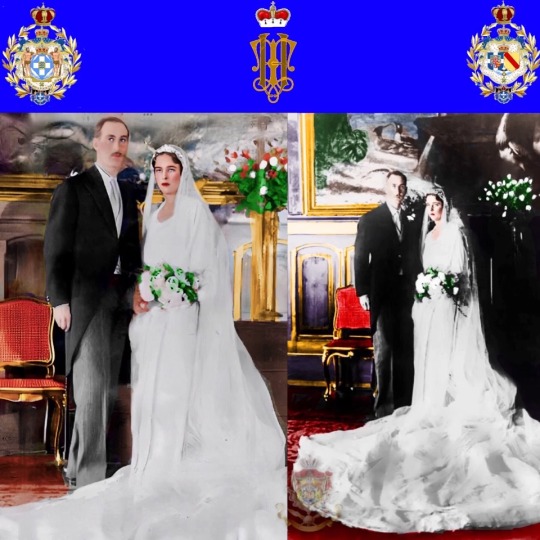


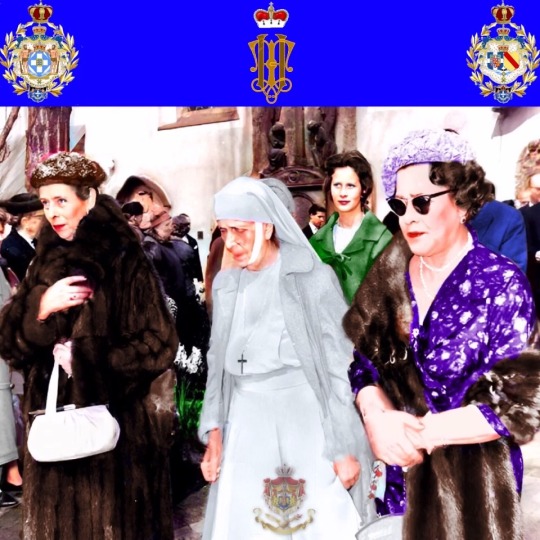


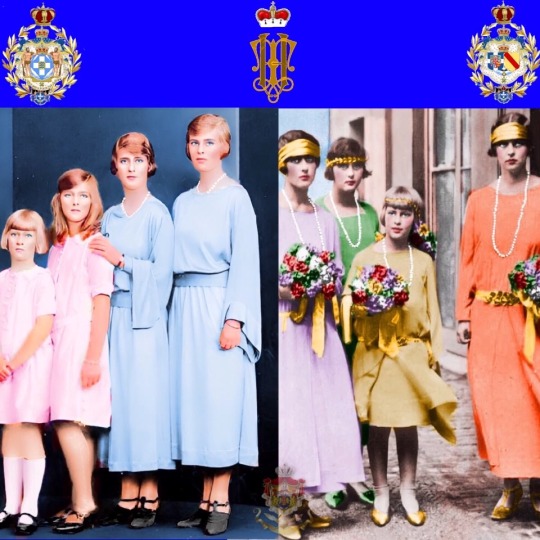
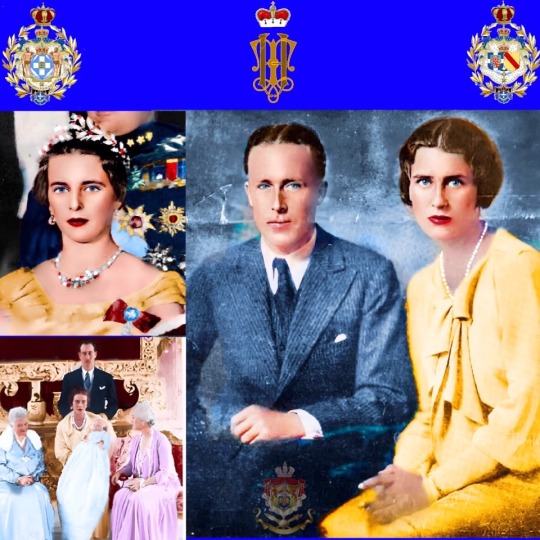
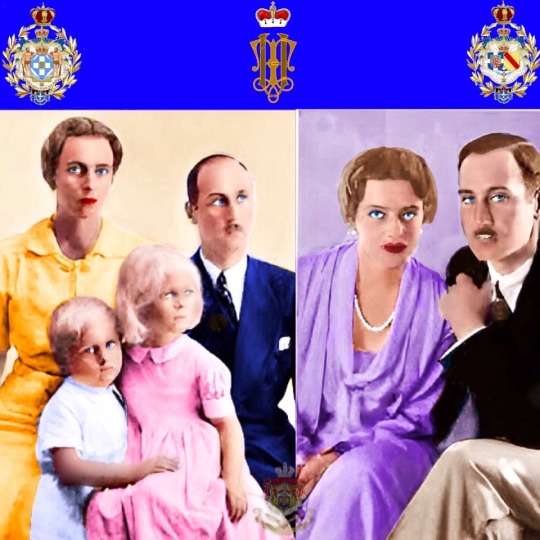
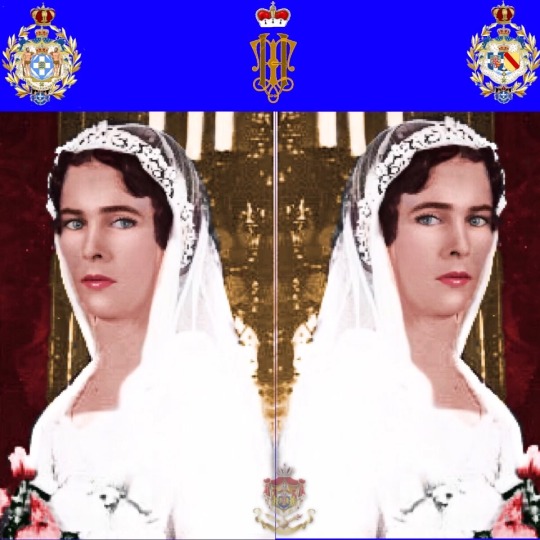
117 years since the Birth of Princess Theodora of Greece and Denmark (30 May 1906 – 16 October 1969) who was by birth a Greek and Danish princess as well as Margravine of Baden through her marriage to Berthold, pretender to the throne of the Grand Duchy of Baden.
The second of five children of Prince Andrew of Greece and Denmark and Princess Alice of Battenberg, Theodora spent a happy childhood between Athens and Corfu. In her youth, however, she witnessed the Balkan Wars (1912–1913), followed by the First World War (1914–1918) and the Greco-Turkish War (1919–1922). For the young princess and her relatives, these conflicts had dramatic consequences and led to their exile in Switzerland (between 1917 and 1920), then in France and the United Kingdom (from 1922 to 1936). During their exile, Theodora and her family depended on the generosity of their foreign relatives, in particular Marie Bonaparte (who offered them accommodation in Saint-Cloud) and Lady Louis Mountbatten (who supported them financially)
At the end of the 1920s, Theodora's mother was struck by a mental health crisis which led to her confinement in a Swiss psychiatric hospital. Shortly after, in 1931, Theodora married Berthold, Margrave of Baden, son of Chancellor of the German Reich Prince Maximilian. The couple then moved to Salem Castle, where Berthold ran a school with teacher Kurt Hahn. The princess gave birth to three children there: Margarita (1932–2013), Maximilian (1933–2022) and Ludwig (born 1937). Opposed to Nazism, Theodora and her husband kept their distance from the Nazi regime; however, this did not prevent Berthold from enlisting in the Wehrmacht at the start of the Second World War. Affected by the conflict, which divided her family into two factions, Theodora became involved in the German Red Cross and other charitable organizations.
The defeat of Germany and its occupation by the Allies brought new upheavals in the life of Theodora and Berthold. Though not held by the Soviets, responsible for the death of several of their cousins, the couple was ostracized by the British royal family at the time of the marriage of Prince Philip, Theodora's only brother, to Princess Elizabeth of the United Kingdom (later Queen Elizabeth II) in 1947. Over the years, the couple was nevertheless reintegrated into the life of the European elite, as illustrated by their invitation and presence at the coronation of Elizabeth II in 1953 and at the wedding of Juan Carlos, Prince of Asturias, and Princess Sophia of Greece and Denmark in 1962.
At the end of the 1940s, Theodora began to suffer from heart problems.Over time, her health deteriorated and she appeared very diminished at the wedding of Prince Juan Carlos and Princess Sophia in 1962.Her health then alternated between times when she had the greatest difficulty speaking or walking and times when she felt absolutely good. Unable to anticipate her next seizures, she had to move around with a cane at all times.Forced to have all her teeth pulled out, she acquired a strange smile, which her mother struggled to get used to.
As his wife's health deteriorated, Berthold suffered a fatal heart attack while driving with their son Ludwig on 27 October 1963.Upset by the demise of her husband, Theodora then hurriedly returned from Italy, where she was on vacation.
Theodora's last years were affected by the establishment of the Regime of the Colonels in Greece and by the departure into exile of King Constantine II and his family.Hospitalized at the clinic of Doctor Büdingen in Konstanz,Theodora died on 16 October 1969.Her funeral was held at the mausoleum of the Baden family in Salem in the presence of many members of the aristocracy, including her nephew Prince Charles, but not her brother Prince Philip who was on an official trip to Canada
117 χρονια από τη γέννηση της πριγκίπισσας Θεοδώρας της Ελλάδας και της Δανίας (30 Μαΐου 1906 – 16 Οκτωβρίου 1969), η οποία ήταν εκ γενετής Ελληνίδα και Δανή πριγκίπισσα καθώς και η Μαργραβίνη του Μπάντεν μέσω του γάμου της με τον Μπέρθολντ, διαδόχου του θρόνου του Μεγάλου Δουκάτου του Μπάντεν.
Το δεύτερο από τα πέντε παιδιά του πρίγκιπα Ανδρέα της Ελλάδας και της Δανίας και της πριγκίπισσας Αλίκης του Μπάτενμπεργκ, η Θεοδώρα πέρασε μια ευτυχισμένη παιδική ηλικία μεταξύ Αθήνας και Κέρκυρας. Στα νιάτα της, ωστόσο, έγινε μάρτυρας των Βαλκανικών Πολέμων (1912–1913), που ακολούθησαν τον Πρώτο Παγκόσμιο Πόλεμο (1914–1918) και τον Ελληνοτουρκικό πόλεμο (1919–1922). Για τη νεαρή πριγκίπισσα και τους συγγενείς της, αυτές οι συγκρούσεις είχαν δραματικές συνέπειες και οδήγησαν στην εξορία τους στην Ελβετία (μεταξύ 1917 και 1920), στη συνέχεια στη Γαλλία και το Ηνωμένο Βασίλειο (από το 1922 έως το 1936). Κατά τη διάρκεια της εξορίας τους, η Θεοδώρα και η οικογένειά της εξαρτιόταν από τη γενναιοδωρία των συγγενών τους, ιδιαίτερα της Μαρίας Βοναπάρτη (που τους πρόσφερε διαμονή στο Saint-Cloud) και της Λαίδης Λούις Μαουντμπάτεν (που τους στήριξε οικονομικά)
Στα τέλη της δεκαετίας του 1920, η μητέρα της Θεοδώρας χτυπήθηκε από μια κρίση ψυχικής υγείας που την οδήγησε στον εγκλεισμό της σε ένα ελβετικό ψυχιατρείο. Λίγο αργότερα, το 1931, η Θεοδώρα παντρεύτηκε τον Μπέρθολντ, Μαργράβο της Βάδης, γιο του Καγκελαρίου του Γερμανικού Ράιχ πρίγκιπα Μαξιμιλιανού. Στη συνέχεια, το ζευγάρι μετακόμισε στο Κάστρο του Σάλεμ, όπου ο Μπέρθολντ διηύθυνε ένα σχολείο με δάσκαλο τον Κερτ Χαν. Η πριγκίπισσα γέννησε εκεί τρία παιδιά: τη Μαργαρίτα (1932–2013), τον Μαξιμιλιανό (1933–2022) και τον Λούντβιχ (γεννήθηκε το 1937). Ενάντια στον ναζισμό, η Θεοδώρα και ο σύζυγός της κράτησαν αποστάσεις από το ναζιστικό καθεστώς. Ωστόσο, αυτό δεν εμπόδισε τον Μπέρτολντ να καταταγεί στη Βέρμαχτ κατά την έναρξη του Β' Παγκοσμίου Πολέμου. Επηρεασμένη από τη σύγκρουση, που χώρισε την οικογένειά της σε δύο φατρίες, η Θεοδώρα ασχολήθηκε με τον Γερμανικό Ερυθρό Σταυρό και άλλες φιλανθρωπικές οργανώσεις.
Η ήττα της Γερμανίας και η κατοχή της από τους Συμμάχους έφερε νέες ανατροπές στη ζωή της Θεοδώρας και του Μπέρθολντ. Αν και δεν θεωρούνταν από τους Σοβιετικούς, υπεύθυνους για τον θάνατο πολλών από τα ξαδέρφια τους, το ζευγάρι εξοστρακίστηκε από τη βρετανική βασιλική οικογένεια τη στιγμή του γάμου του πρίγκιπα Φίλιππου, του μοναδικού αδερφού της Θεοδώρας, με την πριγκίπισσα Ελισάβετ του Ηνωμένου Βασιλείου (αργότερα βασίλισσα Ελισάβετ ΙΙ) το 1947. Με τα χρόνια, το ζευγάρι επανεντάχθηκε ωστόσο στη ζωή της ευρωπαϊκής ελίτ, όπως φαίνεται από την πρόσκληση και την παρουσία τους στη στέψη της Ελισάβετ Β' το 1953 και στον γάμο του Χουάν Κάρλος, πρίγκιπα της Αστούριας, και την πριγκίπισσα Σοφία της Ελλάδας και της Δανίας το 1962.
Στα τέλη της δεκαετίας του 1940, η Θεοδώρα άρχισε να υποφέρει από καρδιακά προβλήματα. Με την πάροδο του χρόνου, η υγεία της επιδεινώθηκε και εμφανίστηκε πολύ εξασθενημένη στο γάμο του πρίγκιπα Χουάν Κάρλος και της πριγκίπισσας Σοφίας το 1962. Η υγεία της εναλλάσσονταν τότε μεταξύ των περιόδων που είχε τα καλύτερα δυσκολία στην ομιλία ή στο περπάτημα και φορές που ένιωθε απολύτως καλά. Μη μπορώντας να προβλέψει τις επόμενες κρίσεις της, έπρεπε να κυκλοφορεί με ένα μπαστούνι ανά πάσα στιγμή. Αναγκασμένη να της βγάλουν όλα τα δόντια, απέκτησε ένα παράξενο χαμόγελο, το οποίο η μητέρα της πάλευε να συνηθίσει.
Καθώς η υγεία της συζύγου του επιδεινώθηκε, ο Berthold υπέστη θανατηφόρο καρδιακό επεισόδιο ενώ οδηγούσε με τον γιο τους Ludwig στις 27 Οκτωβρίου 1963. Αναστατωμένη από τον θάνατο του συζύγου της, η Theodora επέστρεψε βιαστικά από την Ιταλία, όπου ήταν για διακοπές.
Τα τελευταία χρόνια της Θεοδώρας επηρεάστηκαν από την εγκαθίδρυση του καθεστώτος των συνταγματαρχών στην Ελλάδα και από την αναχώρηση στην εξορία του βασιλιά Κωνσταντίνου Β' και της οικογένειάς του. Νοσηλευόμενη στην κλινική του Doctor Büdingen στην Konstanz, η Θεοδώρα πέθανε στις 16 Οκτωβρίου 1969. Η κηδεία της έγινε που πραγματοποιήθηκε στο μαυσωλείο της οικογένειας Baden στο Σάλεμ παρουσία πολλών μελών της αριστοκρατίας, συμπεριλαμβανομένου του ανιψιού της Πρίγκιπα Κάρολου, αλλά όχι του αδελφού της πρίγκιπα Φίλιππου που βρισκόταν σε επίσημο ταξίδι στον Καναδά
#kingconstantine#danishroyalfamily#crownprincepavlos#queenannemarie#greek royal family#house of romanov#greekroyals#crownprincessmariechantal#danishroyals#princeconstantinealexios
2 notes
·
View notes
Text
when: royally fun facts
They may not be fun, but some of them are made-up. Made up facts are in italics.
Grand Duchess Anastasia Mikhailovna of Russia
(Karolina Augusta's great-great-grandmother)
Is the granddaughter of Tsar Nicholas I of Russia
Is the mother of Alexandrine, Queen Consort of Denmark
Is the mother of Frederick Francis IV, Grand Duke of Mecklenburg-Schwerin
Is the mother of Cecilie, Crown Princess of Germany
Following the death of her husband, had a illegitimate son with her personal secretary
Three of her brothers were murdered by the Bolsheviks during the Russian revolution
Princess Karola of Urach
(Karolina Augusta's great-grandmother)
Karola’s father, Wilhelm Karl, 2nd Duke of Urach, was briefly elected as the King of Lithuania in 1918.
Princess Karola of Urach was the first queen consort of Mecklenburg, and also the last Grand Duchess of Mecklenburg-Schwerin and of Mecklenburg-Strelitz.
Karola was the grand-niece of Empress Elisabeth ‘Sisi’ of Austria.
Karola was the half-niece of Queen Elisabeth of the Belgians.
Karola half-first cousins include Leopold III of Belgium, and Marie José, the last Queen Consort of Italy.
Karola and Mary of Teck, Queen of the United Kingdom, both descend from morganatic branches of the House of Württemberg. Karola and Mary were third cousins as great-great-granddaughters of Friedrich II Eugene, Duke of Württemberg.
Karola was a Roman Catholic and retained her faith following her marriage to Heinrich Ludwig, though their children were brought up in the Evangelical Lutheran Church of Mecklenburg.
Duchess Thyra of Mecklenburg-Schwerin
(Karolina Augusta's grandmother)
Thyra’s father, Grand Duke Friedrich Franz IV of Mecklenburg-Schwerin, was overthrown by her father-in-law, King Heinrich Ludwig of Mecklenburg
Thyra was the first Crown Princess of Mecklenburg (1939 - 1954)
Thyra was the second Queen of Mecklenburg (1954 - 1980)
Thyra was the niece of Alexandrine, Queen of Denmark (1912 - 1947)
Thyra was the first cousin of Frederik IX of Denmark (1947 - 1972)
Thyra was the niece of Cecilie, Crown Princess of Germany (1905 - 1951)
Thyra was the first cousin of Louis Ferdinand, Prince of Prussia (1951 - 1994)
Thyra was the niece of Marie Louise, Margravine of Baden (1928 - 1929)
Thyra was the first cousin of Berthold, Margrave of Baden (1929 - 1963), who married Princess Theodora of Greece and Denmark (the older sister of Prince Philip, Duke of Edinburgh)
Thyra was the niece of Ernest Augustus, Duke of Brunswick (1913 - 1918) and head of the House of Hannover (1923 - 1953)
Thyra was the first cousin of Ernst August, Hereditary Prince of Brunswick, Prince of Hanover (1953 - 1987)
Thyra was the first cousin of Frederica, Queen of Greece (1947 - 1964)
Princess Eleonora of Leiningen
(Karolina Augusta's mother)
Descends from all three children of Victoria of Saxe-Coburg-Saalfeld: Carl, 3rd Prince of Leiningen; Princess Feodora of Leiningen; and Queen Victoria of the United Kingdom.
Queen Karolina Augusta I of Mecklenburg
Is the first female ruler in Mecklenburg’s 900 year history.
Will be the final ruler from the House of Mecklenburg which will eventually bring an end to the House’s status as the longest still reigning house in European history.
Is descended from both Queen Victoria of the United Kingdom, and of King Christian IX of Denmark.
Has been the youngest monarch in the world since 1992.
Has 15 godparents:
HRH Princess Cecilie Auguste, Duchess of Ludwigslust (paternal aunt)
HRH Princess Marie Anastasia, Duchess of Grevesmühlen (paternal aunt)
HRH Princess Benedikte of Denmark (paternal second cousin once removed)
HRH Princess Alexandra of Hanover, Princess of Leiningen (maternal aunt-by-marriage)
HSH Princess Margarita of Hohenlohe-Oehringen, Princess of Leiningen (maternal aunt-by-marriage)
HM Silvia, Queen of Sweden (family friend)
HM Queen Beatrix of the Netherlands (paternal and maternal second cousin twice removed)
HRH Princess Astrid of Belgium, Archduchess of Austria-Este (paternal third cousin once removed)
HRH Prince Charles, Prince of Wales (paternal third cousin once removed and family friend)
HRH Prince Frederik, Crown Prince of Denmark (paternal third cousin)
HH Prince Harald of Denmark (paternal first cousin once removed)
HSH Prince Hermann Friedrich of Leiningen (maternal first cousin once removed)
HRH Prince Felipe, Prince of Asturias (paternal third cousin)
HH Borwin, Duke of Mecklenburg-Strelitz (distant cousin and family friend)
HSH Hans-Adam II of Liechtenstein (distant cousin and family friend)
0 notes
Photo

Princess Theodora of Greece and Denmark (30 May 1906 – 16 October 1969) was by birth a Greek and Danish princess as well as Margravine of Baden through her marriage to Berthold, pretender to the throne of the Grand Duchy of Baden.
The second of five children of Prince Andrew of Greece and Denmark and Princess Alice of Battenberg, Theodora spent a happy childhood between Athens and Corfu. In her youth, however, she witnessed the Balkan Wars (1912–1913), followed by the First World War (1914–1918) and the Greco-Turkish War (1919–1922). For the young princess and her relatives, these conflicts had dramatic consequences and led to their exile in Switzerland (between 1917 and 1920), then in France and the United Kingdom (from 1922 to 1936). During their exile, Theodora and her family depended on the generosity of their foreign relatives, in particular Marie Bonaparte (who offered them accommodation in Saint-Cloud) and Lady Louis Mountbatten (who supported them financially).
At the end of the 1920s, Theodora's mother was struck by a mental health crisis which led to her confinement in a Swiss psychiatric hospital. Shortly after, in 1931, Theodora married Berthold, Margrave of Baden, son of Chancellor of the German Reich Prince Maximilian. The couple then moved to Salem Castle, where Berthold ran a school with teacher Kurt Hahn. The princess gave birth to three children there: Margarita (1932–2013), Maximilian (born 1933) and Ludwig (born 1937). Opposed to Nazism, Theodora and her husband kept their distance from the Nazi regime, however this did not prevent Berthold from enlisting in the Wehrmacht at the start of the Second World War. Affected by the conflict, which divided her family into two factions, Theodora became involved in the German Red Cross and other charitable organizations.
The defeat of Germany and its occupation by the Allies brought new upheavals in the life of Theodora and Berthold. Though not held by the Soviets, responsible for the death of several of their cousins, the couple was ostracized by the British royal family at the time of the marriage of Prince Philip, Theodora's only brother, to Princess Elizabeth of the United Kingdom (later Queen Elizabeth II) in 1947. Over the years, the couple was nevertheless reintegrated into the life of the European elite, as illustrated by their invitation and presence at the coronation of Elizabeth II in 1953 and at the wedding of Juan Carlos, Prince of Asturias, and Princess Sophia of Greece and Denmark in 1962. Theodora died of heart problems six years after her husband, in 1969. She was the paternal aunt of Charles III.
0 notes
Text

Silver Wedding of Margrave Berthold of Baden and his wife, Princess Theodora of Greece and Denmark, 17 August 1956.
The couple are surrounded by their three children, Prince Ludwig, Prince Max and Princess Margarita.
Theodora was the sister of Prince Philip, Duke of Edinburgh.
#margrave berthold of baden#margravine theodora of baden#princess margarita of baden#prince max of baden#prince ludwig of baden#baden#german royalty#german royal#1956#1950s
18 notes
·
View notes
Photo

Amalie of Hesse-Darmstadt, Hereditary Princess of Baden (20 June 1754 - 21 June 1832)
#amalie of hesse-darmstadt#friederike amalie#hereditary princess of baden#daughter of ludwig ix landgrave of hesse-darmstadt#wife of charles louis hereditary prince of baden#history#women in history#18th century#19th century#art
4 notes
·
View notes
Photo
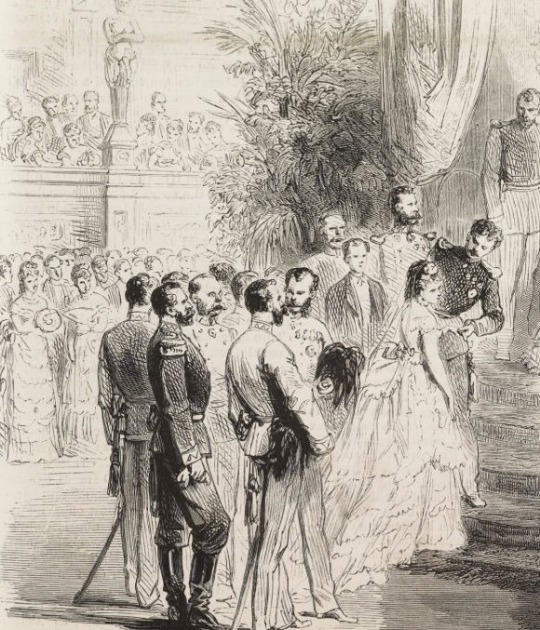
The marriage of Archduchess Gisela, eldest child of the Emperor and Empress of Austria, to Prince Leopold of Bavaria, a first cousin of King Ludwig II, the reigning Sovereign of Bavaria, has been mentioned with other foreign news. It is not supposed to be an even of great political importance, as it might have seemed a few years ago, before the reconstruction of the German Empire under the King of Prussia, when the victory of the allied national forces, in the French war of 1870, over a common enemy, had completed the work of political union somewhat roughly commenced in 1866 by the Prussian conquest of several minor states and the expulsion of Austria from the late Germanic Confederation. Though Prince Leopold of Bavaria is a son of one of the chief opponents of the recent changes in Germany, there is little expectation of his ever being inclined or enabled to use his connection with the Emperor Francis Joseph, his father-in-law, for the purpose of reversing policy to which Bavaria, as well as Saxony, Wurtemberg, Baden, and Hesse-Darmstadt, has adhered in compliance with the national sentiment. The marriage, which took place at Vienna on the 20th ult. Is regarded as one of personal affection and family conveniences rather than as a pledge or token of joint action between Austria and Bavaria in affairs concerning the general interests of Germany, which have probably little to fear, at this time, from jealousy or resentment on the part of the Austrian Government. By the goodnatured people of Vienna, who are frankly affectionate in their loyalty, and fond o fthe grand old house of Hapsburg-Lorraine, so long reigning over them, this occasion was hailed with great festivity, their minds not being wholly engrossed with the approaching event of the Universal Exhibition. The nuptial ceremony was performed in the Augustine church of the Imperial Palace, by Cardinal Rauscher, who had married the bride's parents, the Emperor and Empress of Austria, nineteen years before, April 24, 1854. The Empress Elizabeth, herself is a relative of the bridegroom, being a daughter of the Bavarian Duke Maximilian belonging to the Palatinate branch of the house of Wittelsbach, wile the Royal family of Bavaria is the elder line of that house. The two houses of Hapsburg and Wittelsbach have frequently intermarried; and the latter has also connected itself with many petty sovereignties now extinct in Italy, Greece, and Germany, whose former incumbents live in retirement on their private estates in Southern Europe. Prince Luitpold, father of Prince Leopold, is a distinguished Bavarian statesman and military officer, whose wife, deceased in 1864, was a daughter of the late Grand Duke Leopold of Tuscany. Their second son, Leopold Maximilian Joseph Maria Adolphus was born at Munich in February, 1846; he is a good soldier, a captain of horse artillery, and served under General von der Tann in the French war. His bride, Archduchess Gisela Louisa Maria, was born July 12, 1856, so that she is not yet seventeen years of age, and is younger by ten years than her husband. They are residing at Salzburg during the honeymoon
London Illustrated News, May 10, 1873
#Archduchess Gisela#Prince Leopold of Bavaria#habsburg#bavarian royal family#austrian royal family#1870s#royal weddings
20 notes
·
View notes
Text
Ludwig of Bavaria and his Russian marriage project
As @tairin has already pointed out in her article about tsar Alexander’s siblings, für some years there was a project for a marriage between Alexander’s sister Ekaterina

(or Katharina/Catherine in German/French) and this promising young gentleman:

Prince Ludwig, oldest son and heir of Bavarian elector (and future king) Maximilian Joseph.
Ludwig was, by all accounts, a rather »complex character« – and I suspect historians do not use such terms in order to compliment a historical person. Ludwig was highly intelligent, as decisive, egoistic and stubborn as his father was wavering, affable and cautious, had a distinctive authoritarian streak (and some other things in common with Napoleon), was very well-educated (he had studied ancient Greek at the universities of Landshut and Göttingen and would later become a big patron for the arts; a large part of what WWII has left of Munich’s representative architecture was built under his rule), but he also stuttered, had extremely bad hearing, was distrustful bordering on paranoid and considered himself a poet, producing and even publishing throughout his lifetime an abundance of rhymes, some of which are truely cringe-worthy.
But why would the heir of an at the time (1799) rather tiny country like Bavaria even be considered worthy of becoming the possible bridegroom for a daughter of mighty tsar Paul? Well, it was a family business. One of the unsung heroines of this era, as I have mentioned before, was this lady:

Amalie von Hessen-Kassel, Margravine of Baden, nicknamed »mother-in-law of Europe«. While the men at the end of the 18th century were mostly out doing revolution and war and other childish stuff, Amalie, like every matron in every good Jane Austen-style novel, took care of the truely important things: arranging suitable marriages for her many daughters. One of them had married future tsar Alexander of Russia, another had become the second wife of one Maximilian Joseph of Bavaria, thus step-mother to prince Ludwig. (Ludwig hated her, by the way. He was good at that.)
So, Max Joseph and future tsar Alexander were brothers-in-law. But that’s not the only connection. Amalie, Max Joseph’s mother-in-law, was also Max Joseph’s first cousin (her mother and his father had been siblings. Those family trees!). And Amalie had once been considered as a bride for tsar Paul (according to a biography of her, Paul actually would have preferred her over her sister but Catherine the Great decided otherwise.) So, it’s not unlikely that Amalie was behind the betrothal of Ludwig to Ekaterina in 1799, still arranged while tsar Paul ruled. This way Bavaria, always feeling menaced by Austria, as usual tried to secure the alliance of one of the great powers of Europe in order to protect her existence.
However, in 1799 that marriage was still an idea for the future. After all, Ludwig was only 13 years old at the time. And politics would soon make this project – a project that Ludwig, enchanted by the idea of becoming brother-in-law to an emperor, stubbornly clung to – a rather complicated matter. I’m not quite sure what caused the first international disgruntlement between Russia and Bavaria around 1799; I believe it had something to do with the order of Malta. At the core of it were probably deeper misgivings; at the time when Paul changed course in diplomacy and started to warm up to First Consul Bonaparte in Paris, Max Joseph of Bavaria was, nolens volens, still on the Austrian side (and thus would see his country ravaged once more by war in 1801).
But the contract never seems to have been officially broken up, so Ludwig still considered Ekaterina his future bride. Even though alliances shifted again (Bavaria approaching France, Russia distancing herself from France). The War of the Third Coalition in 1805 pretty much ruled out this idea once and for all: Bavaria was now, to Ludwig’s horror, allied with France (he hated France!) against Austria and Russia. Tsar Alexander expressed his attitude towards Bavaria, when he met Metternich in Berlin in October 1805, as follows:
»As for the Elector of Bavaria, my dear relative, we shall be pinching him, I hope, of significance; there is no such example to be cited in the annals of war...«
… which of course related to Bavaria’s alliance with the »evil incarnate« Napoleon, an alliance that Austria, not without reason, considered a defection and traiterous towards the common cause. After the war and the Russian defeat, Maximilian made some similar sneering remarks about his »dear brother-in-law«, i.e. Alexander. So it seemed pretty clear that any idea of a Romanov-Wittelsbach marriage was out of the question.
Pretty clear to anyone except Ludwig, that is. Did I mention he was stubborn? - Okay, his sister Auguste had just been forced to marry this Beauharnais dude and, worse, seemed to have the bad taste to actually become happy with him. So? Ludwig did not see any reason why the fact that his country was at war with Russia and allied to Russia’s greatest enemy and that his family was now even (somewhat) related to Napoleon Bonaparte should keep him from marrying Ekaterina. Period.
And because that was so, he wrote a letter. To the tsar. Behind his father’s back and behind the back of pretty much everyone involved with diplomacy and international relations in Bavaria, especially without the knowledge of minister of Foreign affairs Montgelas. (He hated Montgelas. Did I mention he was good at that?) - In his letter, Ludwig stated that a) he had always hated the French b) he particularly hated Napoleon c) he did not share his father’s political opinions d) he had had no idea his father would do something as horrible as side with the French and e) he still wanted to marry Ekaterina.
I guess it’s easily conceivable how such a letter from the heir of Napoleon’s, at the time, closest German ally, a young man who was even related to the French imperial family, had the potential to cause a diplomatic earthquake. However, somebody at the Bavarian embassy in Petersburg fished the letter out of the diplomatic mail, read it and had the common sense to inquire back to Munich whether Montgelas was informed of uh… whatever this was. In short, Alexander never got to see the letter, but Max Joseph, Montgelas and half of the Bavarian court for a long time were shaking in their boots for fear French spies might have gotten wind of this affair – after all, Bavarian diplomats were hardly the only ones interested in the correspondence of German crown princes.
But that still wasn’t the end of it. In spring 1806, Ludwig – again to his horror – was invited to Paris and spent several months in rather close proximity to the French court and the imperial family. Napoleon was quite aware of the fact Ludwig didn’t like him, and to his credit he really made an effort to win this young man over. He of course didn’t stand a chance. Ludwig admired him in many aspects, yet hated him nonetheless (did I mention he was good at that?). Napoleon’s often rather uncouth behaviour in company and his military style conversations didn’t help the matter either. Napoleon, as to him, probably couldn’t make heads or tails of this young guy who seemed completely oblivious to all things military yet got all passionate about Greek verses, Italian paintings and obscure German philosophists. Oh, and women.
And about women Napoleon kept teasing him, preferably in the presence of other people. He loved to ask Ludwig – at the family dinner table – if he had been »wise«, i.e., if he had been to any brothels or had affairs, wanted to know whom he was seeing in particular, if he had enough money for it, and Josephine followed that up with stories about how she had always helped her son out whenever Eugène had been in need of some »bonnet« in order to convince a girl to return his affections.
Let’s just say, if Napoleon had planned on endearing himself to his guest, he had picked the wrong strategy. Ludwig was 19 years old and did not appreciate such intrusive questions at all.
He also, while still in Munich, had made no secret of the fact he considered himself engaged to Ekaterina. So Napoleon kept teasing him about that, too, asking: »So, how’s your malicious Russian?«, »What do you want with a Russian anyway?« etc. When they were once riding in a coach together with Karl von Baden and Bessières, Napoleon even wanted to know when exactly Ludwig would marry, and then started an argument about how the Russian lady would need to change religion and how awkward it might be to have a queen of »Greek« religion in Munich. During a walk in the gardens, in the presence of Josephine and Caroline, Napoleon announced that he had just made peace with Russia and said to Josephine, pointing at Ludwig: »How happy he is, he thinks of his little Russian.« Only to then start another argument about how Ludwig at 19 was still »un blanc bec« and not even legally old enough to marry (Ludwig was, actually).
So, unsurprisingly Ludwig suspected that Napoleon was not quite happy with the idea of this marriage. Which of course made him wish for it even harder. As late as December 1807, during Napoleon’s second trip to the Kingdom of Italy, Eugène on Ludwig’s insistance had to sound out Napoleon about Ludwig’s marriage to Ekaterina, and Napoleon answered that he had nothing against it. Ludwig did not believe it, and rightfully so, as at the time Napoleon himself had gotten interested in marrying this lady. But of course Napoleon could hardly admit that to the son of his current empress.
On a sidenote, it’s funny that Ludwig crossed paths with Napoleon several times when it came to women; apparently they had very similar tastes. Ludwig also fell for Mademoiselle George (but who didn’t, apparently), when he came to Warsaw he immediately started to court Marie Walewska, only to realise that Napoleon had already beaten him to that goal, and he then asked in Vienna for the hand of Marie Louise only weeks before her marriage to Napoleon (she was never told about the proposal as negotiations about her being sold off to Napoleon had already begun). In the end, fearing that Napoleon might force him to marry somebody if he waited any longer, he hastily chose one Therese von Sachsen-Hildburghausen. Who, as father Max Joseph commented dryly, did not bring much of a dowry, but at least was completely inconspicuous, so nobody could have anything against this marriage.
The wedding of Ludwig and Therese, btw, started a tradition some people may already have heard of, it’s called »Oktoberfest«.
33 notes
·
View notes
Text

Currently there is no known photos of the wedding of Tsar Nicholas II of Russia and Princess Alix of Hesse and By Rhine on 14 November 1894 ( 26 November 1894 N.S.) at the Grand Church of the Winter Palace.Of course they may still be in the Russian Archives,not yet released
On 19 April 1894, Tsarevich Nikolai Alexandrovich Romanov of Russia was at the wedding of Ernst-Ludwig Grand Duke of Hesse, to their mutual cousin,Princess Victoria Melita of Saxe-Coburg and Gotha. Nicholas had also obtained permission from his parents, Tsar Alexander III and Empress Marie Feodorovna, to propose to Ernst's younger sister, Princess Alix of Hesse and by Rhine.The Emperor and Empress had initially been opposed to the match. However, Nicholas, who had first met Alix a decade earlier in St. Petersburg when Alix's sister, Princess Elisabeth of Hesse and by Rhine, married Nicholas's uncle, Grand Duke Sergei Alexandrovich Romanov of was not to be dissuaded. Furthermore, Tsar Alexander's health was beginning to fail.
Shortly after arriving in Coburg, Nicholas proposed to Alix. However, Alix, who was a devout Lutheran, rejected Nicholas's proposal, as in order to marry the heir to the throne, she would have to convert to Russian Orthodoxy.However, Alix's cousin, Kaiser Wilhelm II of Germany, who had been at the wedding, insisted that it was her duty to marry Nicholas, despite her religious scruples.Elisabeth also spoke with her, insisting that there were not that many differences between Lutheranism and Orthodoxy. At the prompting of the Kaiser, Nicholas proposed for the second time, and she accepted.
On 1 November 1894, Alexander III died at Maly Palace, Livadia, leaving twenty-six-year-old Nicholas as the next Tsar of Russia. The following day, Alix, who had arrived at Livadia several days earlier in order to receive the dying Tsar's blessing, was received into the Russian Orthodox Church as Grand Duchess Alexandra Feodorovna.Alix had apparently expressed her wish to take the name Catherine, but decided to take the name Alexandra on Nicholas's request.
Guests
The groom's family
•The Dowager Empress Marie Feodorovna of Russia ~ mother of Nicholas II
•Grand Duchess Xenia Alexandrovna Romanova of Russia ~ sister of Nicholas ll
•Grand Duke Alexander Mikhailovich Romanov of Russia ~ brother-in-law and first cousin once removed) of Nicholas II
•Grand Duke Mikhail Alexandrovich Romanov of Russia, brother of Nicholas II
•Grand Duchess Olga Alexandrovna Romanova of Russia, sister of Nicholas II
•Grand Duke Vladimir Alexandrovich Romanov of Russia ~ paternal uncle of Nicholas II
Grand Duchess Marie Pavlovna Romanova of Russia (the Elder) ~ paternal aunt by marriage of Nicholas II
•Grand Duke Kyril Vladimirovich Romanov of Russia ~ paternal first cousin of Nicholas II
•Grand Duke Boris Vladimirovich Romanov of Russia ~ paternal first cousin of Nicholas II
•Grand Duke Andrei Vladimirovich Romanov of Russia ~ paternal first cousin of Nicholas II
•Grand Duchess Elena Vladimirovna Romanova of Russia ~ paternal first cousin of Nicholas II
•Grand Duke Alexei Alexandrovich Romanov of Russia ~ paternal uncle of Nicholas II
•Grand Duke Sergei Alexandrovich Romanov of Russia ~ paternal uncle of N0icholas II
Grand Duchess Elisabeth Feodorovna Romanova of Russia ~ sisters-in-law and paternal aunt by marriage of Nicholas II
•Grand Duke Pavel Alexandrovich Romanov of Russia ~ paternal uncle of Nicholas II
•Grand Duchess Alexandra Iosifovna Romanova of Russia ~ paternal grandaunt by marriage of Nicholas II
•Grand Duke Konstantin Konstantinovich Romanov of Russia ~ first cousin,once removed of Nicholas II
•Grand Duchess Elizaveta Mavrikievna Romanova of Russia ~ first cousin once removed by marriage of Nicholas II
•Grand Duke Dmitri Konstantinovich Romanov of Russia ~ first cousin once removed of Nicholas II
•Duchess Vera of Württemberg, first cousin once removed of Nicholas II (representing the King of Württemberg)
•Grand Duke Mikhail Nikolaevich Romanov of Russia ~ paternal granduncle of Nicholas II
•Grand Duke Nikolai Mikhailovich Romanov of Russia ~ first cousin once removed of Nicholas II
•Grand Duke Georgiy Mikhailovich Romanov of Russia ~ first cousin once removed of Nicholas II
•Grand Duke Sergei Mikhailovich Romanov of Russia ~ first cousin once removed of Nicholas II
•King Christian lX of Denmark ~ maternal grandfather of Nicholas II
•King George l of the Hellenes ~ maternal uncle of Nicholas ll
•Queen Olga of the Hellenes ~ maternal aunt and first cousin once removed of Nicholas II
•Prince George of Greece and Denmark ~ first cousin of Nicholas II
•Prince Valdemar of Denmark ~ maternal uncle of Nicholas II
The bride's family
•Grand Duke Ernst-Ludwig of Hesse and by Rhine ~ brother of Alexandra Feodorovna
•Princess Irene of Prussia ~ Sister of Alexandra Feodorovna
•Prince Henry of Prussia ~ brother-in-law and maternal first cousin of Alexandra Feodorovna (representing the German Emperor)
•Edward, Prince of Wales ~ uncle of both Alexandra and Nicholas (representing the Queen of the United Kingdom)
•Alexandra,Princess of Wales ~ aunt of both Alexandra and Nicholas (representing the Queen of the United Kingdom)
•The Prince George,Duke of York ~ Alexandra and Nicholas' mutual first cousin
•Alfred,Duke and Duchess of Saxe-Coburg-Gotha ~ uncle of Alexandra Feodorovna and uncle by marriage of Nicholas ll
•Grand Duchess Maria Alexandrovna Romanova,Duchess of Saxe-Coburg-Gotha ~ aunt of Nicholas ll and aunt by marriage of Alexandra Feodorovna
•Ferdinand, Crown Prince of Romania, husband of Alexandra and Nicholas' mutual first cousin (representing the King of Romania)
Foreign Royalty
•Mecklenburg : Duke John Albert of Mecklenburg ~ second cousin once removed of Nicholas II (representing the Grand Duke of Mecklenburg-Schwerin)
•Grand Duchy of Baden : Prince Wilhelm and Princess Maria Maximilianovna of Baden, second cousin once removed of both Nicholas and Alexandra, and first cousin once removed of Nicholas II (representing the Grand Duke of Baden)
•The Duke of Leuchtenberg, first cousin once removed of Nicholas II
Prince George Maximilianovich and Princess Anastasia of Leuchtenberg, first cousin once removed of Nicholas II and his wife
•Grand Duchy of Oldenburg : Duke Alexander Petrovich and Duchess Eugenia Maximilianovna of Oldenburg, second cousin once removed and first cousin once removed of Nicholas II (cousin of the Grand Duke of Oldenburg)
•Grand Duchy of Oldenburg : Duke Peter Alexandrovich of Oldenburg ~ second cousin of Nicholas II
•Grand Duchy of Oldenburg : Duke Constantine Petrovich of Oldenburg ~ second cousin once removed of Nicholas II
•Grand Duchy of Mecklenburg-Strelitz : Duke Georg Alexander of Mecklenburg-Strelitz ~ second cousin once removed of Nicholas II (nephew of the Grand Duke of Mecklenburg-Strelitz)
•Grand Duchy of Mecklenburg-Strelitz : Duke Karl Michael of Mecklenburg-Strelitz ~ second cousin once removed of Nicholas II
•Duchy of Saxe-Altenburg Prince Albert and Princess Helene of Saxe-Altenburg ~ third cousin once removed of both Nicholas and Alexandra, and second cousin once removed of Nicholas II (representing the Duke of Saxe-Altenburg)
63 notes
·
View notes
Text

Ludwig, Grand Duke of Hesse and by Rhine with Gottfried, Prince of Hohenlohe-Langenburg and Berthold, Margrave of Baden 1940s.
#ludwig of hesse#Berthold of Baden#Gottfried of Hohenlohe-Langenburg#1940s#darmstadt#baden baden#Langenburg
5 notes
·
View notes
Text

Cecilie was the third child and daughter of HRH 👑🤴👑 Prince Andreas of Hellenes 🇬🇷and Denmark 🇩🇰and HRH Princess Alice of Batenberg later HRH 👑👸👑Princess Aliki of Hellenes 🇬🇷and Denmark 🇩🇰She was born on 22 June 1911 at the summer estate of the Greek Royal Family at Tatoi fifteen kilometres north of Athens. Although her given name was Cecilie, she was known to her family as Cécile.
Cecilie was baptised at Tatoi on 2 July 1911.
Through her father, Cecilie was a grandchild of HM King Georgios I of Hellenes Prince of Denmark and his wife, HIH Grand Duchess Olga Kostandinovna of Russia (a granddaughter of Tsar Nickolas I of Russia ) through her mother, she was a great-great granddaughter of Queen Victoria Cecilie had three sisters and a brother :
a)Margarita (wife of Prince Gottfried of Hohelhohen -Langenburg b)Theodora (wife of Berthold Magrave of Baden ) and c)Sophia (wife firstly of Prince Christoph of Hesse and secondly of Prince George William of Hannover )
Her brother, was Prince Philip, late Duke of Edinburgh, and the husband of Queen Elisabeth II of GB
On 2 February 1931 at Darmstadt Cecilie married George Horatius Hereditary Grand Duke of Hesse and by Rhine who was her maternal first cousin once removed.
They had four children.
In October 1937, Cecilie's father-in-law Grand Duke Ernest Ludwig of Hesse died. A few weeks after the funeral, her brother-in-law Prince Ludwig was due to be married to Margaret Campbell Geddes in London.
On 15 November 1937, Georg Donatus, Cecilie, their two young sons and Georg's mother Grand Duchess Eleonore left Darmstadt for London, where they planned to attend the wedding. The aircraft in which they were travelling crashed in flames after hitting a factory chimney near Ostend in Belgium killing all on board. At the time, Cecilie was eight months pregnant with her fourth child, and the remains of the baby, a boy, were found in the wreckage.
Cecilie was buried with her husband and three sons in Darmstadt at the Rosenhöhe, the traditional burial place of the Hesse family. Cecilie's daughter Johanna was adopted by Prince Ludwig and Princess Margaret, but she died two years later from meningitis and is buried with her parents and brothers. Cecilie was the first of Prince Andrew and Princess Alice's children to die. Her last surviving sibling, Prince Philip, died on 9 April 2021. He survived her by more than 83 years.
Η ΑΒΥ Πριγκίπισσα Κεκιλια της Ελλαδος 🇬🇷και Δανίας 🇩🇰ήταν το τρίτο παιδί και κόρη της ΑΒΥ 👑🤴👑 Πρίγκιπα Αντρέα της Ελλάδας 🇬🇷και της Δανιας 🇩🇰 και της ΑΒΥ πριγκίπισσας Αλίκης του Μπάτενμπεργκ αργότερα ΑΒΥ 👑👸👑 πριγκίπισσα Αλικη της Ελλάδας 🇬🇷και της Δανιας 🇩🇰.Η ΑΒΥ Πριγκίπισσα Κεκιλια γεννήθηκε στις 22 Ιουνίου 1911 στο θερινό Ανακτορο της Ελληνικής Βασιλικής Οικογένειας στο Τατόι δεκαπέντε χιλιόμετρα βόρεια της Αθήνας.
Η ΑΒΥ Πριγκίπισσα Κεκιλια βαφτίστηκε στο Τατόι στις 2 Ιουλίου 1911.
Μέσω του πατέρα της, η Κεκιλια ήταν εγγόνι της ΑΜ Βασιλέα της Ελλαδος 🇬🇷Πρίγκιπας της Δανίας 🇩🇰και της σύζυγου του, της ΑΑΥ Μεγάλης Δούκισσας Ολγας Κονσταντινοβας της Ρωσίας (εγγονή του Τσάρου Νικολάου Α’ της Ρωσίας) μέσω της μητέρας της, η Κεκιλια ήταν εγγονή της βασίλισσας Βικτώριας .
Η Πριγκίπισσα Κεκιλια είχε τρεις αδελφές και έναν αδελφό:
α) Πριγκίπισσα Μαργαρίτα (σύζυγος του πρίγκιπα Γκότφριντ του Χόχελχεν-Λάντενμπουργκ β) Η Πριγκίπισσα Θεοδώρα (σύζυγος του Μπέρτολντ Μαγκράβε του Μπάντεν) και
γ) Πριγκίπισσα Σοφία (σύζυγος πρώτα του πρίγκιπα Χριστόφου της Έσσης και δεύτερον του πρίγκιπα Τζορτζ Γουίλιαμ του Αννόβερου)
Ο αδερφός της, ήταν ο πρίγκιπας Φίλιππος, αείμνηστος Δούκας του Εδιμβούργου, και σύζυγος της Βασίλισσας Ελισάβετ Β της ΜΒ
Στις 2 Φεβρουαρίου 1931 στο Ντάρμσταντ, η Κεκιλια παντρεύτηκε τον Μεγάλο Δούκα της Έσσης και Ρήνου, ο οποίος ήταν πρώτος ξάδελφος απο την πλευρά της μητέρας της καιαπέκτησαν τέσσερα παιδιά.
Τον Οκτώβριο του 1937, πέθανε ο πεθερός της Πριγκιπισσας Κεκίλιας Μεγάλος Δούκας Eρνεστος Λουδοβίκος της Έσσης. Λίγες εβδομάδες μετά την κηδεία, ο κουνιαδος της Πρίγκιπας Λουδοβικος επρόκειτο να παντρευτεί με τη Μαργαρίτα Κάμπελ Γκάντες στο Λονδίνο.
Στις 15 Νοεμβρίου 1937, ο Γεωργιος Δονατιος η Πριγκίπισσα Κεκίλια οι δύο νεαροί γιοι τους και η μητέρα του Γεωργίου Μεγάλη Δούκισσα Ελεωνόρα έφυγαν από το Νταρμσταντ για το Λονδίνο, όπου σχεδίαζαν να παρευρεθούν στους γάμους . Το αεροσκάφος στο οποίο ταξίδευαν συντρίβεται αφού χτύπησε μια καμινάδα εργοστασίου κοντά στην Οστάνδη στο Βέλγιο σκοτώνοντας όλους τους επιβάτες. Εκείνη την εποχή, η Κεκίλια ήταν οκτώ μηνών έγκυος με το τέταρτο παιδί της .
Το πτώμα του μωρού, ενός αγοριού, βρέθηκε στα συντρίμμια.
Η Κεκίλια θάφτηκε με τον σύζυγό της και τους τρεις γιους τους στο Ντάρμσταντ στο Ροσενχολε, τον παραδοσιακό τόπο ταφής της οικογένειας Χεσσης Η κόρη της Κεκιλιας που δεν ήταν μαζί στο αεροπλάνο Ιωάννα υιοθετήθηκε από τον πρίγκιπα Λουδοβίκο και την πριγκίπισσα Μαργαρίτα, αλλά πέθανε δύο χρόνια αργότερα από μηνιγγίτιδα και είναι θαμμένη με τους γονείς και τους αδελφούς της. Η Κεκίλια ήταν το πρώτο από τα παιδια του Πρίγκιπα Ανδρέα και της Πριγκίπισσας Αλίκης που πέθανε . Ο τελευταίος αδελφός της, ο πρίγκιπας Φίλιππος, πέθανε στις 9 Απριλίου 2021. Την επέζησε για περισσότερα από 83 χρόνια.
#kingconstantine#danishroyals#danishroyalfamily#crownprincepavlos#greek royal family#queen anne marie#greekroyals#house of romanov#queenannemarie#royal
29 notes
·
View notes